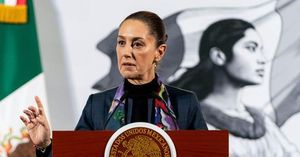On May 15, 2014, moviegoers witnessed the return of one of cinema's most iconic monsters—Godzilla. Directed by Gareth Edwards, this reboot marked the beginning of what fans now know as the MonsterVerse, establishing new lore and setting the stage for future monster films. With its roots tracing back to the 1954 Japanese film, Gojira, Godzilla's latest iteration sought to honor its legacy by incorporating both thrilling action and compelling narrative.
The film debuted just as audiences were celebrating the 60th anniversary of this legendary creature. Godzilla garnered significant attention, not just for its impressive visual effects and sound design, but also for the emotional weight it brought to the table. Critics praised Edwards for his unique storytelling approach, making Godzilla not just another monster movie, but a deep exploration of humanity's struggle against forces beyond its control.
The film introduces us to Joe Brody, played by Bryan Cranston, who becomes increasingly obsessed with discovering the truth behind the mysterious nuclear incident at the Janjira nuclear power plant. This obsession stems from personal tragedy—his wife dies during the catastrophe, which the government initially passes off as just another earthquake. Joe’s relentless pursuit of the truth leads him to the discovery of M.U.T.O.s—Massive Unidentified Terrestrial Organisms, which pose monumental threats to humanity and act as Godzilla's adversaries.
Fifteen years after the Janjira disaster, Joe's son Ford Brody, portrayed by Aaron Taylor-Johnson, is drawn back to the chaos when he receives news of strange activity at the plant, which was supposed to be securely contained. Ford, a lieutenant in the military, must team up with others, including Dr. Ishiro Serizawa (Ken Watanabe), to confront the impending threat and understand the fragile balance between nature and mankind. Themes of environmental caution permeate the narrative, urging viewers to reflect on human actions leading to catastrophic repercussions.
The film's visual mastery is another reason for its acclaim. Edwards carefully presents Godzilla as more than just the monster; it’s about the fear and awe inspired by its presence. The director uses suspenseful pacing and limited initial viewings of Godzilla to maximize captivated audience reactions when the creature finally appears. Audiences, familiar with earlier films where monsters dominate the screen, found this fresh and innovative, setting new standards for creature-feature storytelling.
Besides its impressive technical elements, Godzilla features strong performances by its talented cast. Aaron Taylor-Johnson, as Ford, displays depth and emotional gravitas as he navigates the dangers posed by the M.U.T.O.s and the presence of Godzilla. Elizabeth Olsen, who plays Ford’s wife, provides a necessary emotional anchor, grounding the film with her character's genuine concern for family. The film also embraces its supporting cast, with notable performances from David Strathairn as Admiral Stenz and Sally Hawkins as Dr. Vivienne Graham, both of whom contribute to the depth of the military and scientific perspectives on Godzilla and M.U.T.O.s.
These elements combined led to Godzilla earning about 5.2 million euros at the box office upon its release and became available for renting and digital downloads shortly thereafter. The financial success paved the way for future installments within the MonsterVerse, establishing Godzilla as not just iconic but also bankable. Following this film, audiences enjoyed sequels and spin-offs, including Kong: Skull Island (2017), Godzilla: King of the Monsters (2019), and the epic showdown featured in Godzilla vs. Kong (2021).
With the resurgence of giant monster films, Godzilla helped introduce new generations to the genre, proving to be not just nostalgic for long-time fans but thrilling for newcomers. Each character arc interconnected seamlessly, presenting personal struggles against greater existential threats. The multi-layered storyline, with its blend of unique themes, touches on family, loss, and the concept of nature fighting back against human infringements—elements worthy of study beyond mere entertainment.
Edwards' modern take on Godzilla emphasizes the fragile relationship between humans and nature, aligning with contemporary discussions on environmental responsibility. This conversation resonates even more today as challenges surrounding climate change and ecological destruction become prevalent. Godzilla’s portrayal acts as both caution and warning, making the monster not just the chaos creator, but also highlighting its potential as nature’s guardian.
Overall, Godzilla invites audiences to face their fears—fears of what they've wrought upon their planet and the dangers of ignoring the consequences of their actions. The haunting imagery, combined with stirring performances and thematic substance, creates a film experience still celebrated as one of the better monster films today.
With earlier plans buzzing about extending this franchise, potential sequels promise to bring forth more intrigue and exciting follow-ups. Discussion about additional Godzilla entries within the MonsterVerse keeps fans on the edge of their seats, eager to navigate what lies beyond the horizon. Every installment not only builds on the last but opens new avenues for storytelling, characters, and encounters with new monstrous threats.



